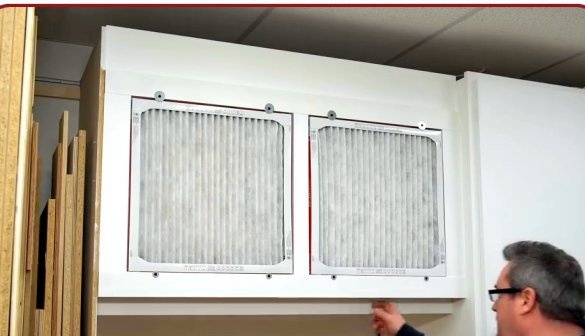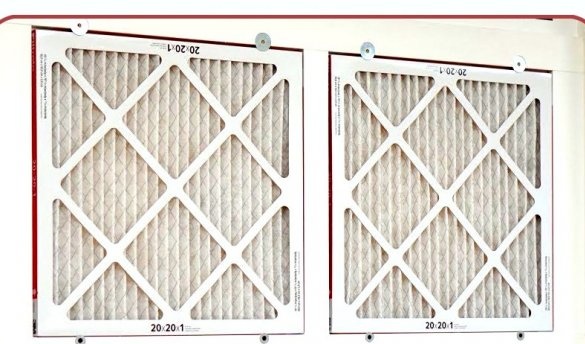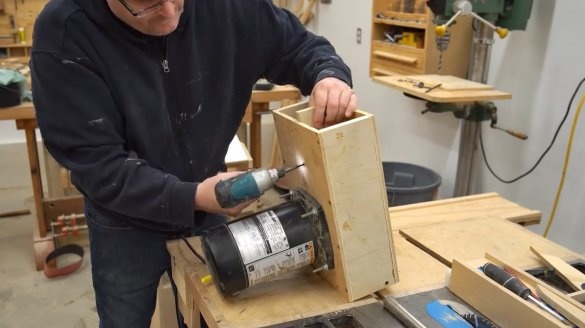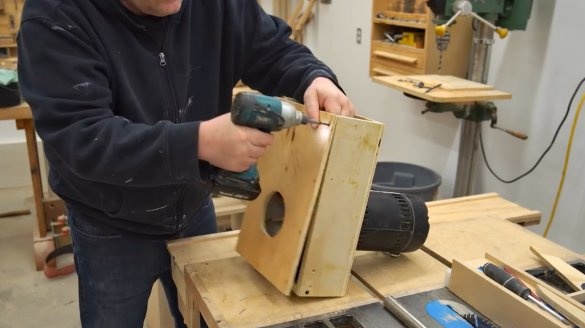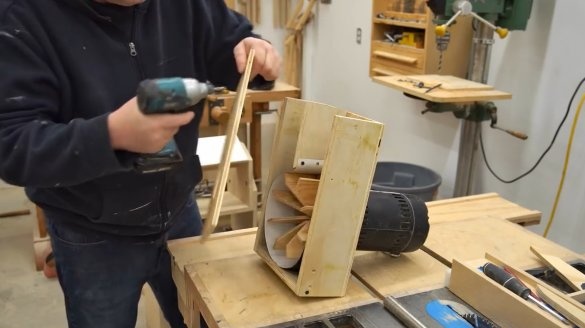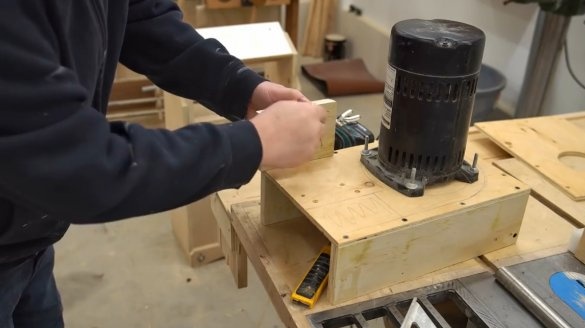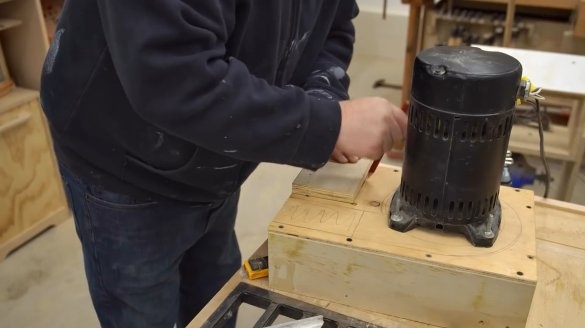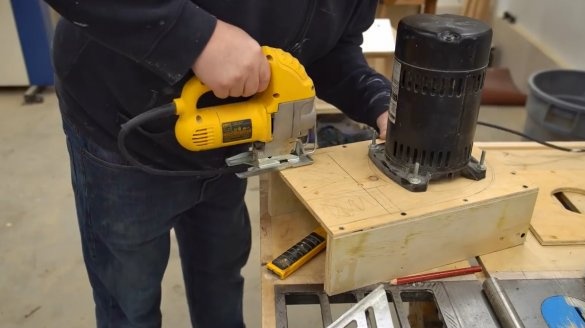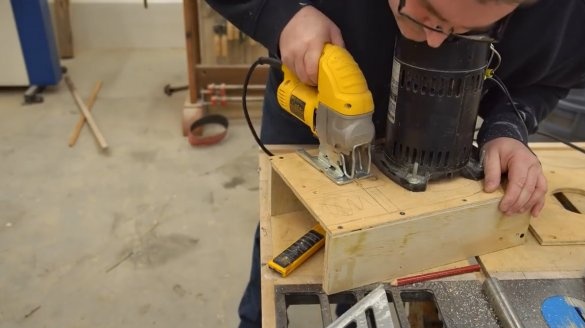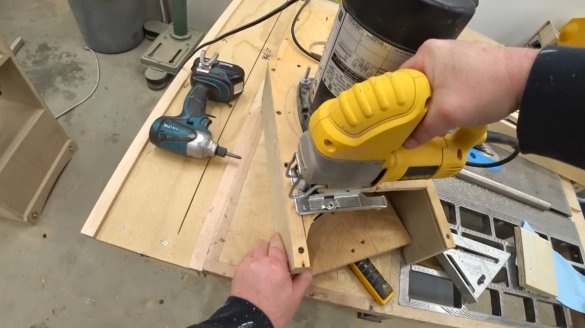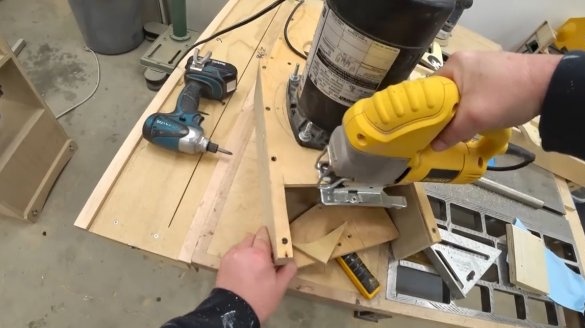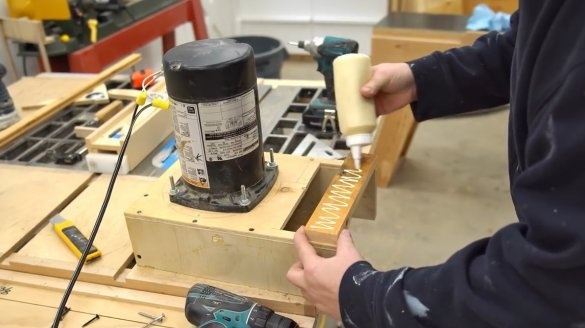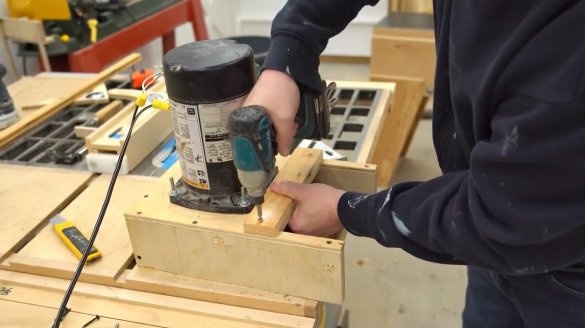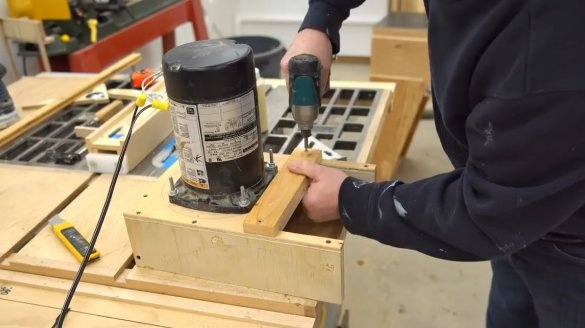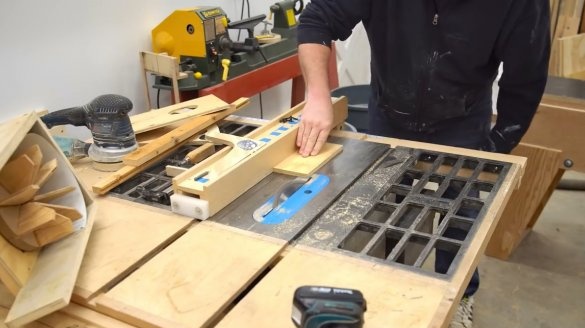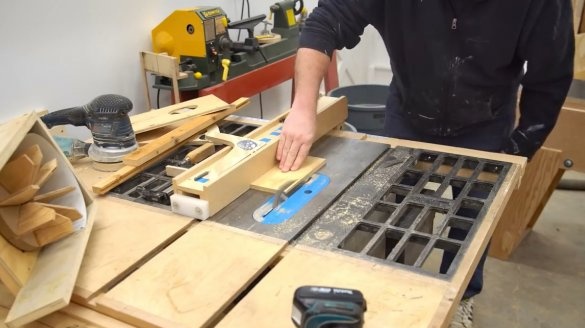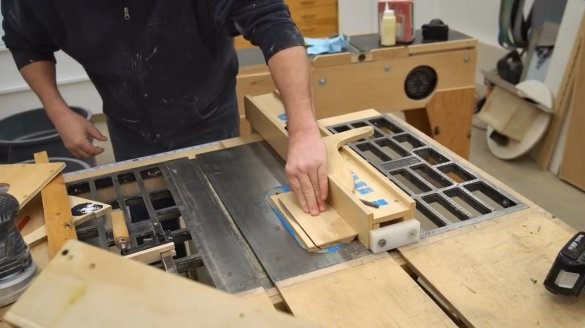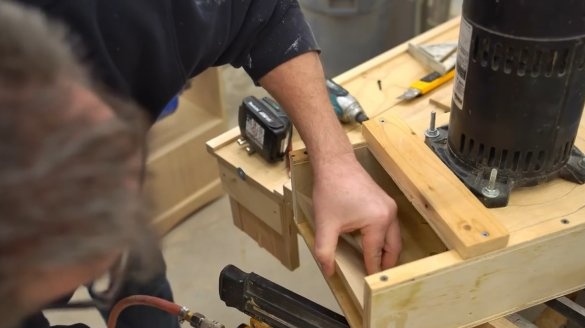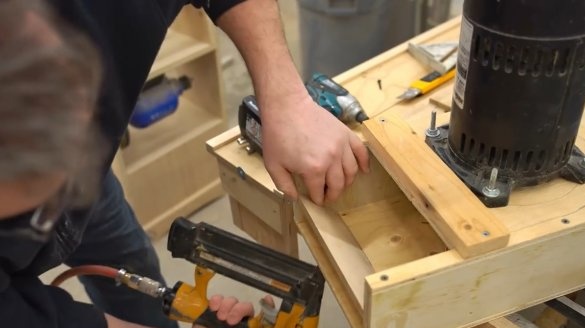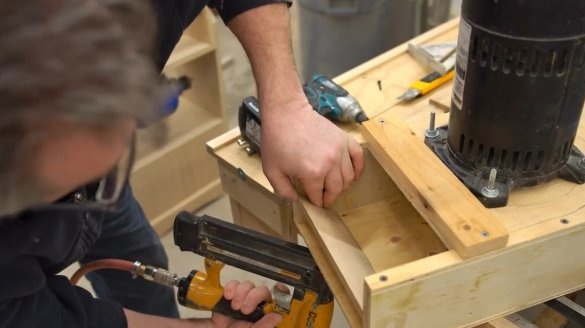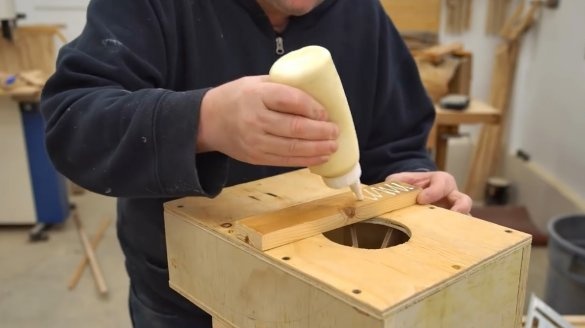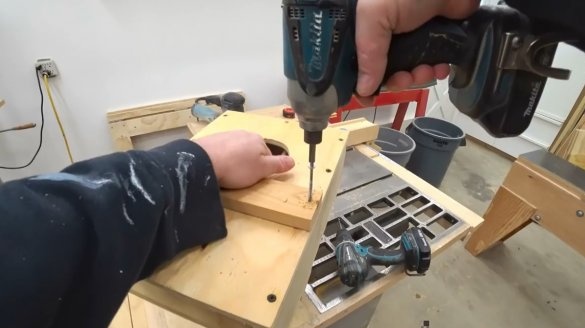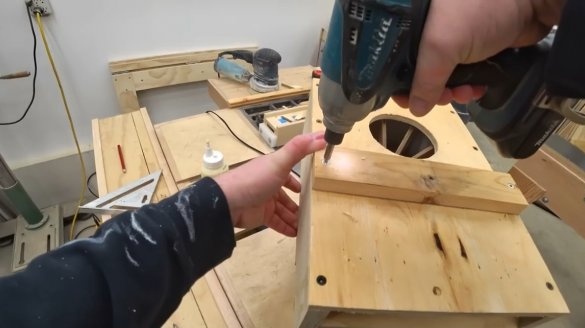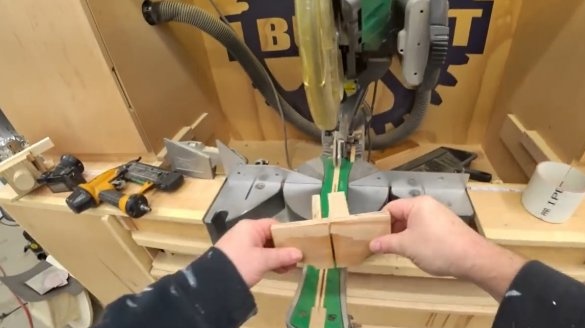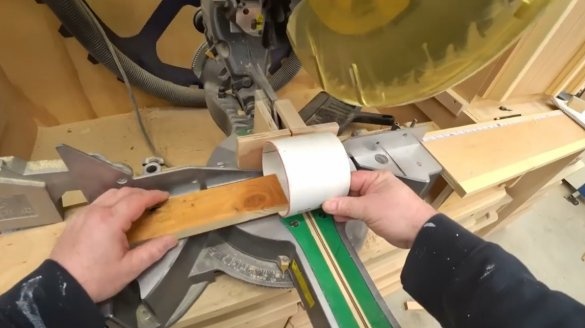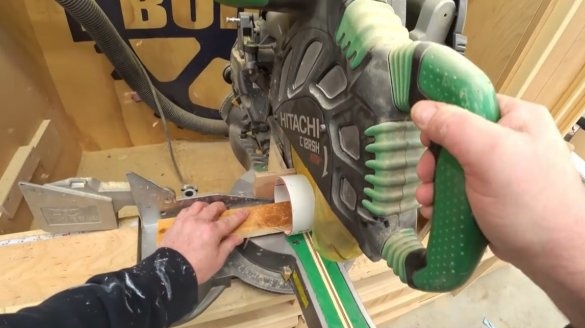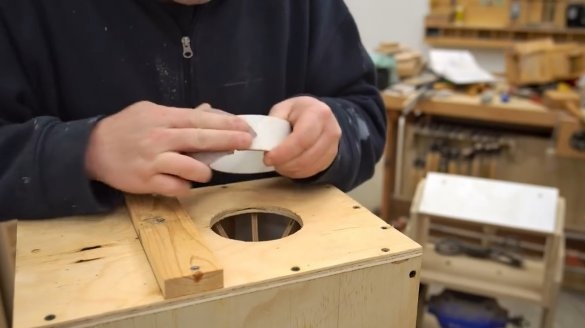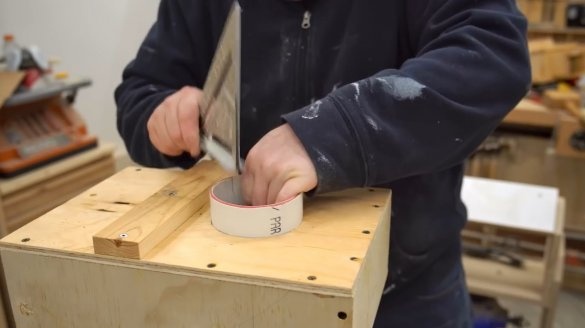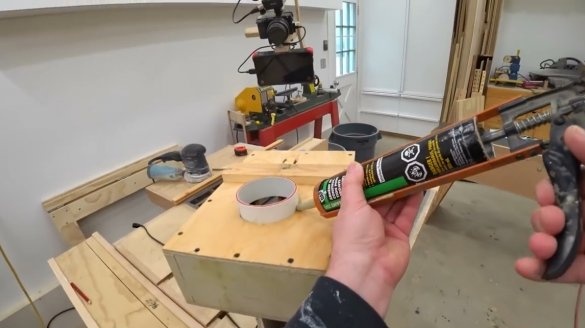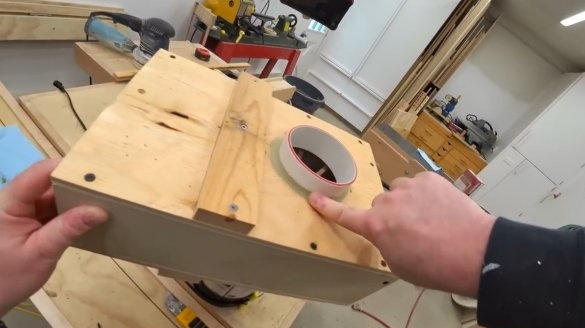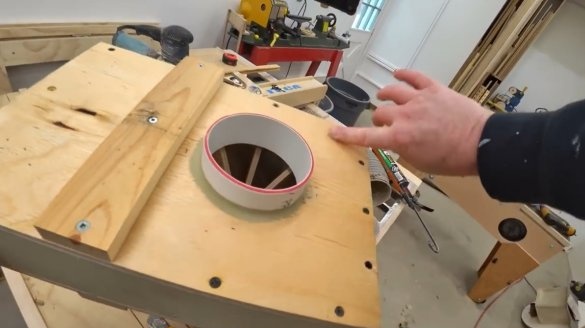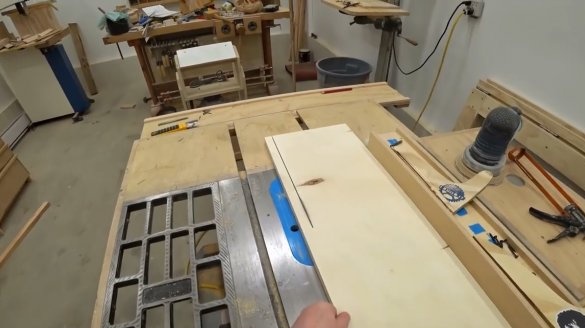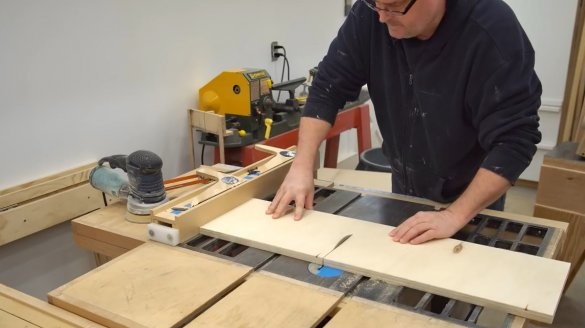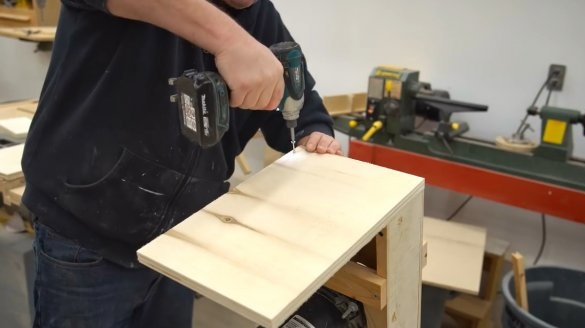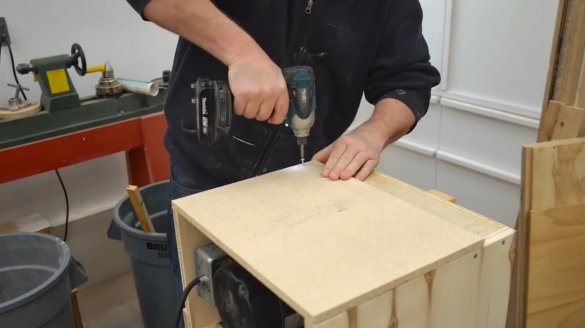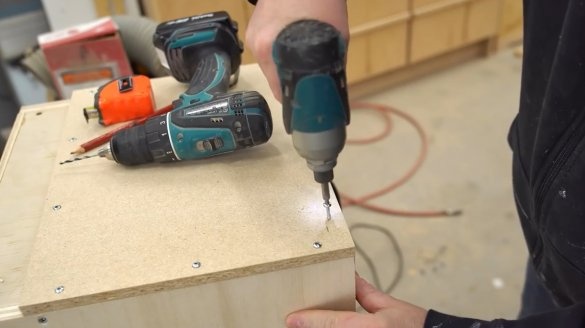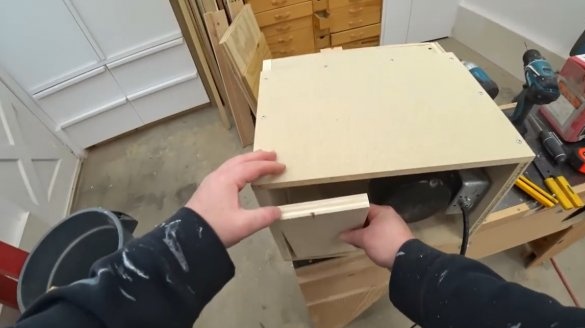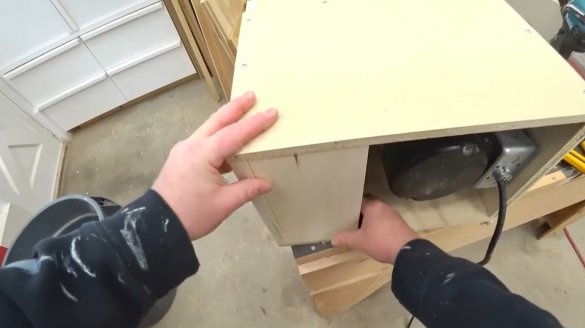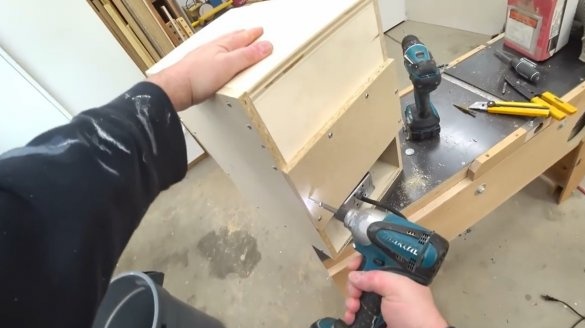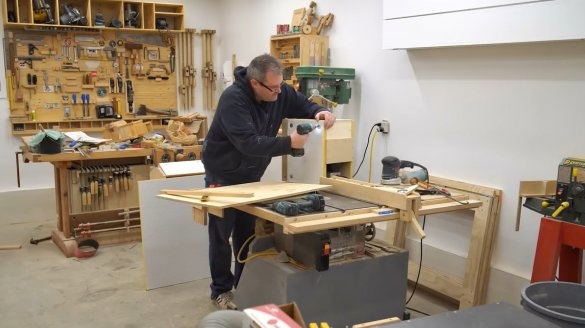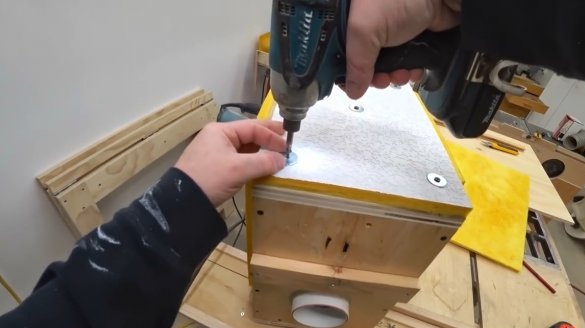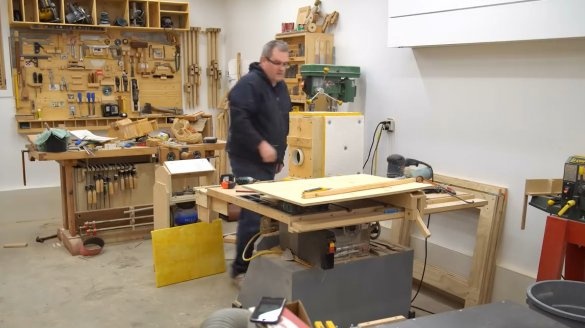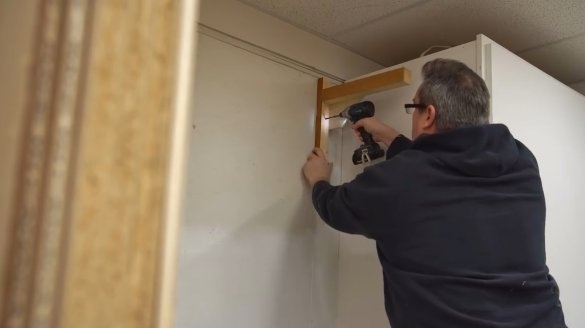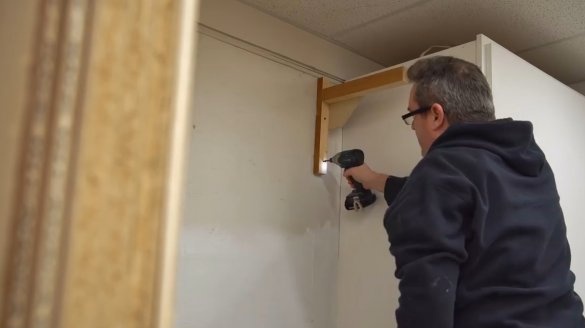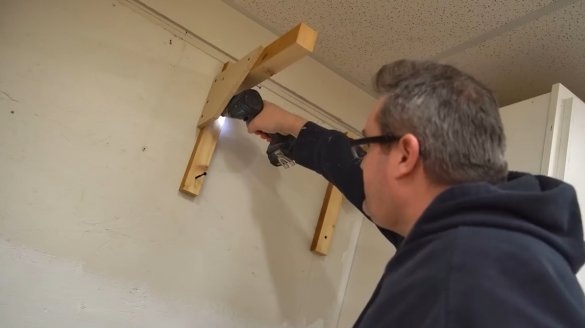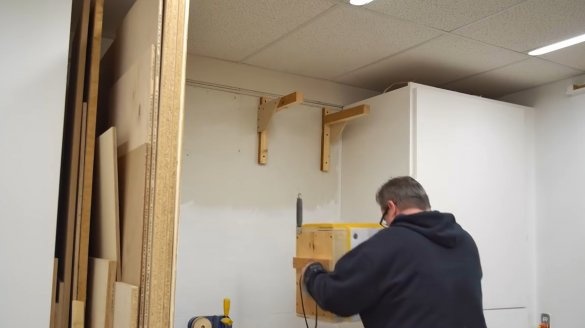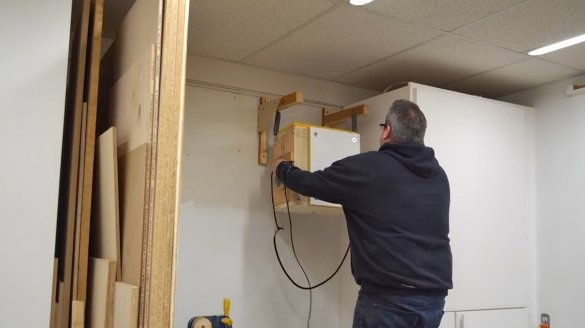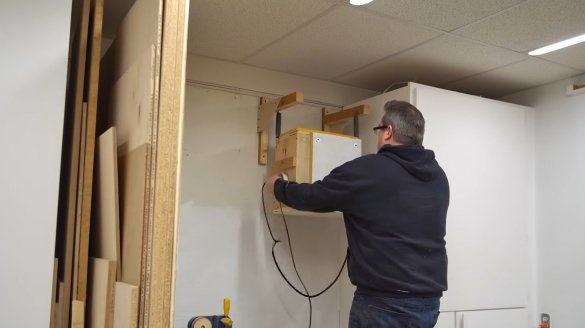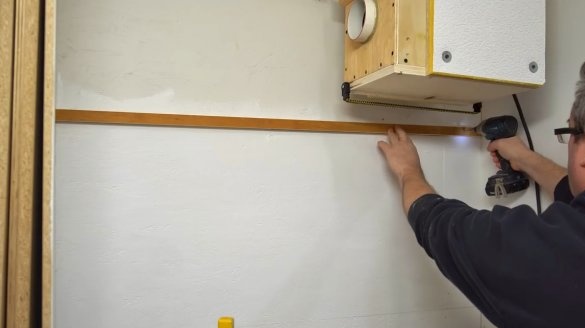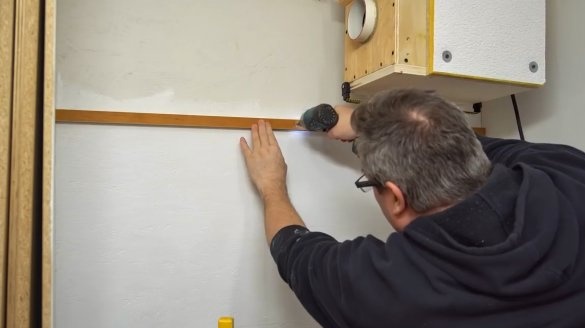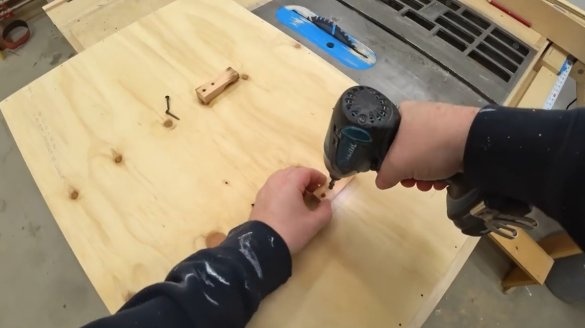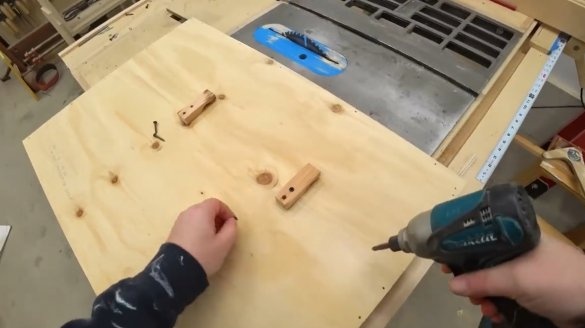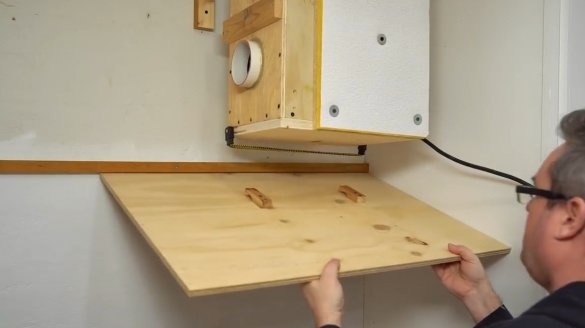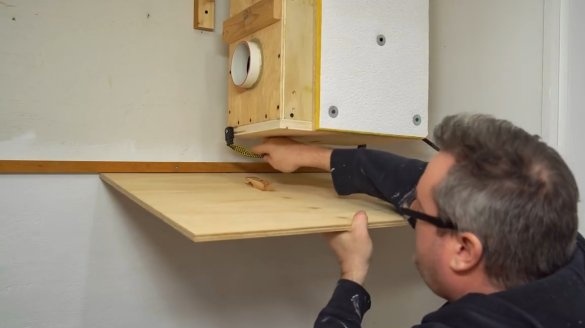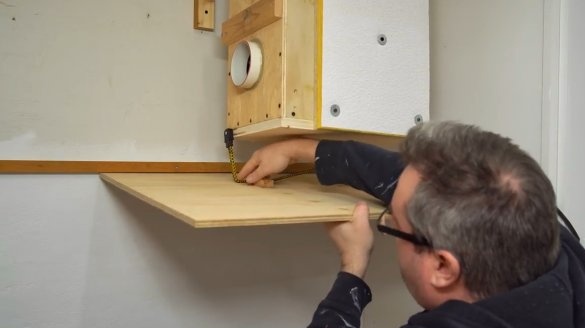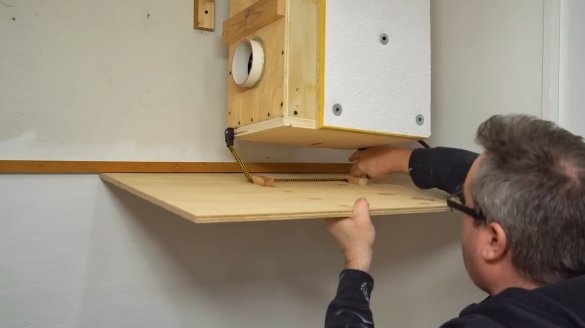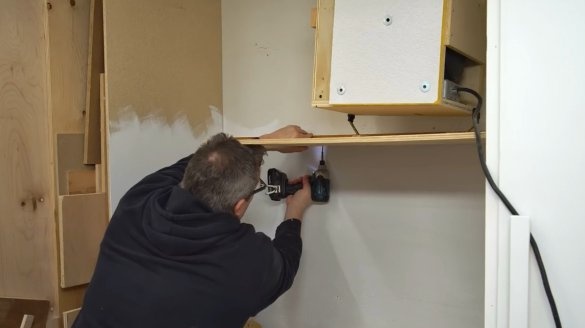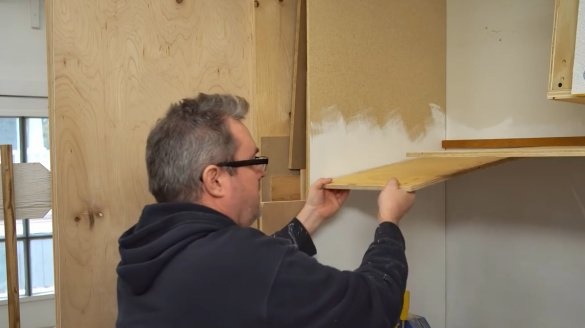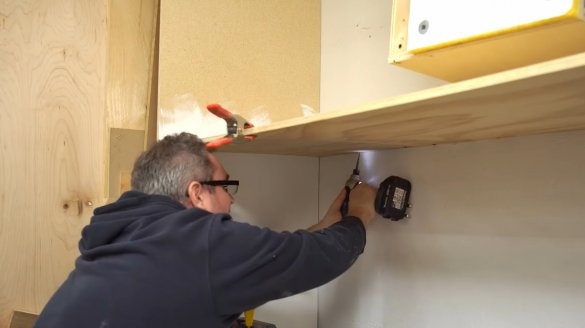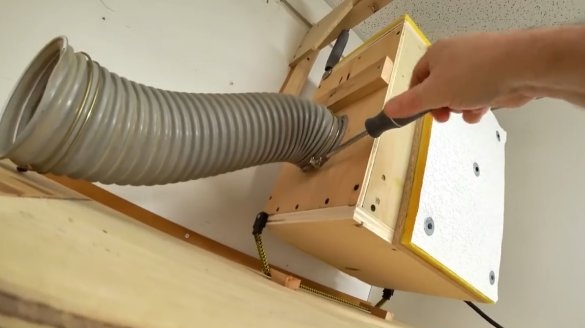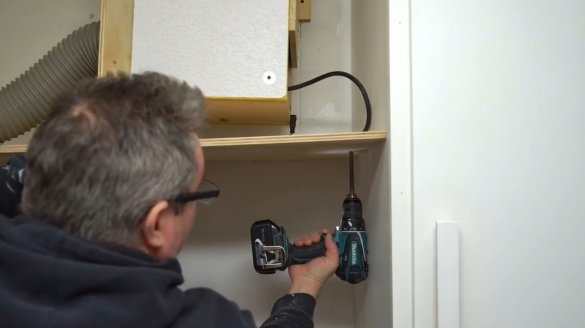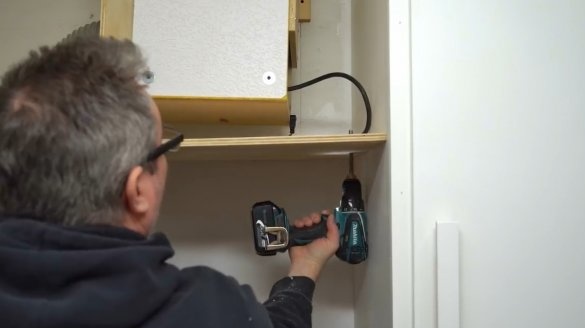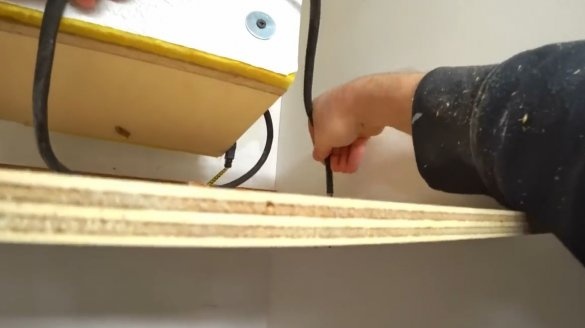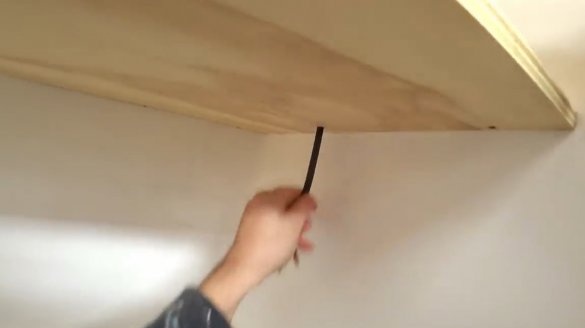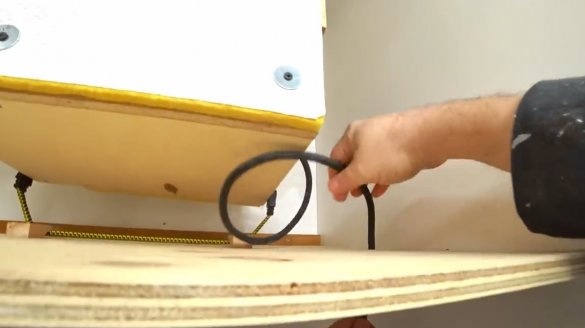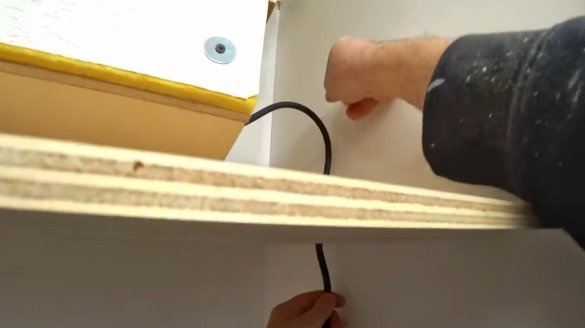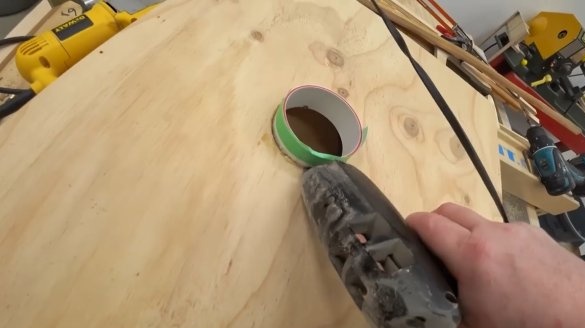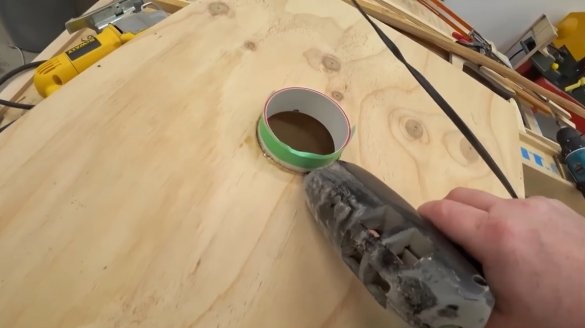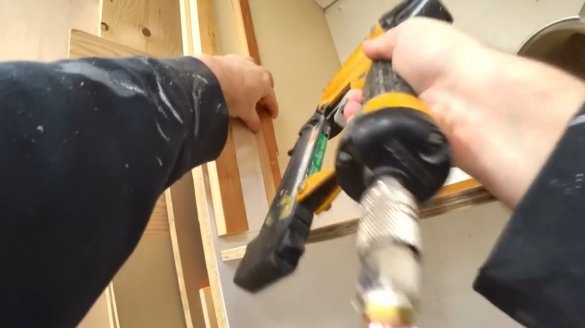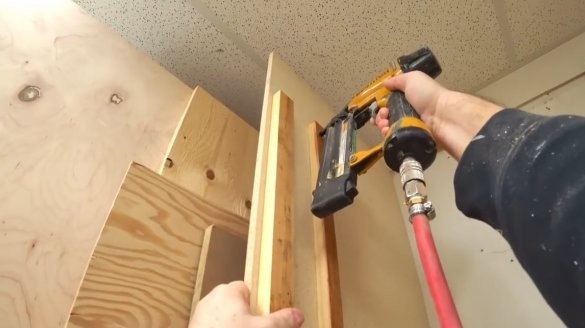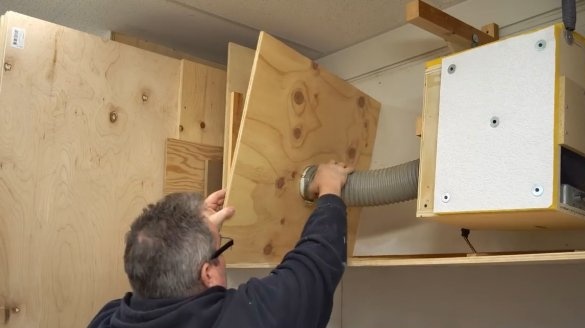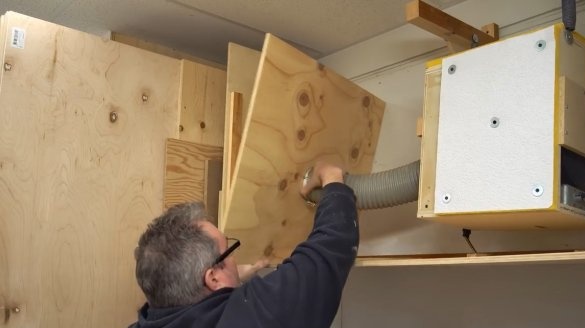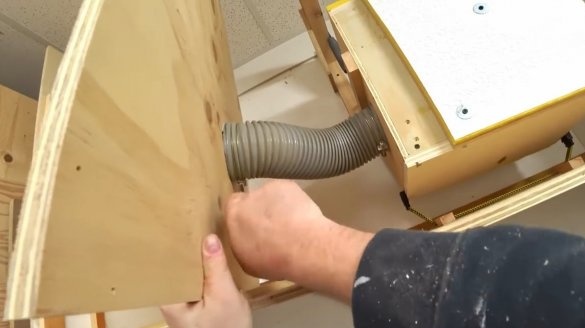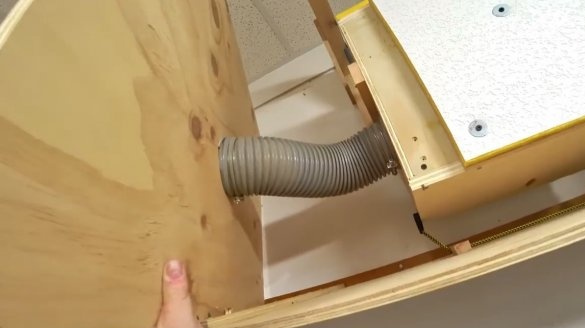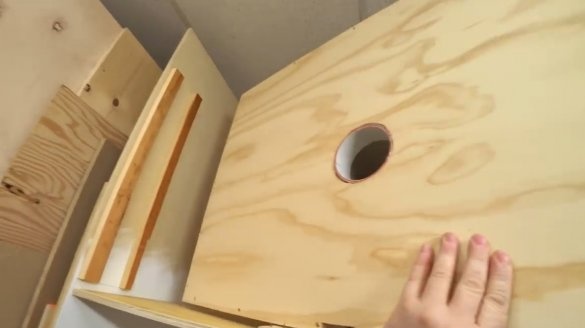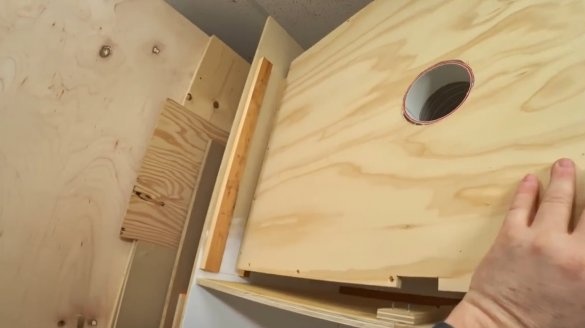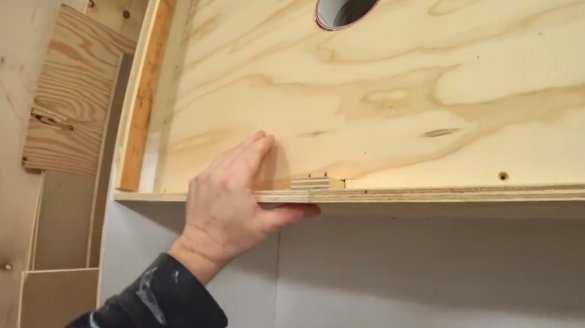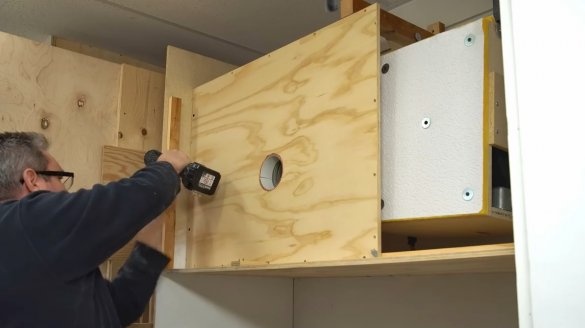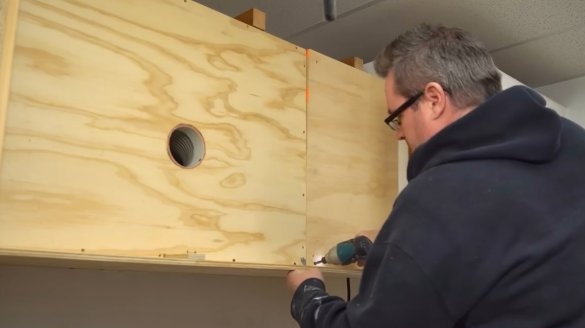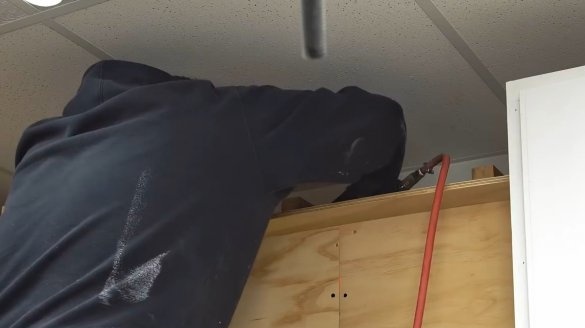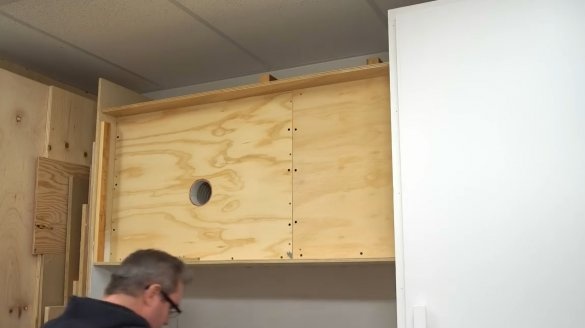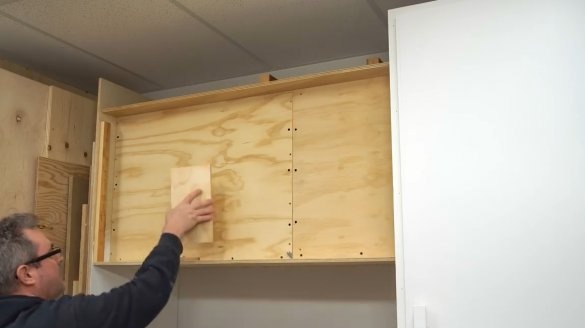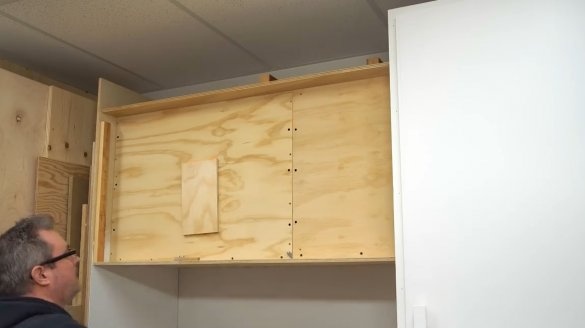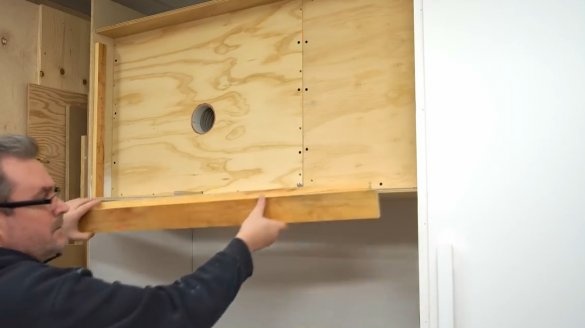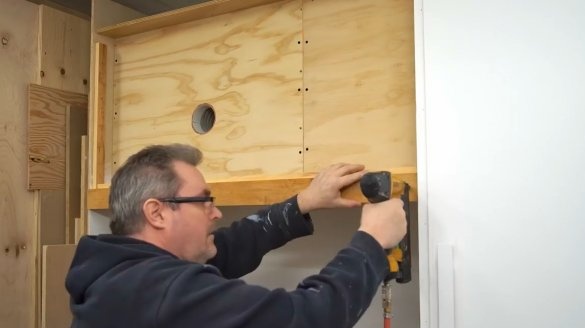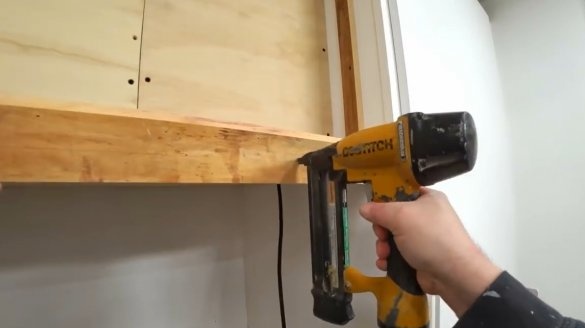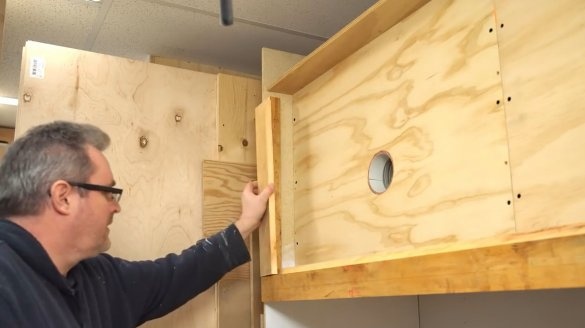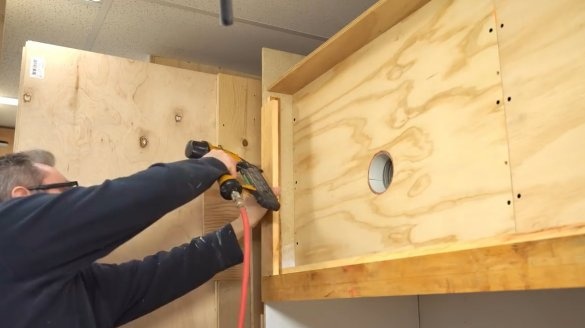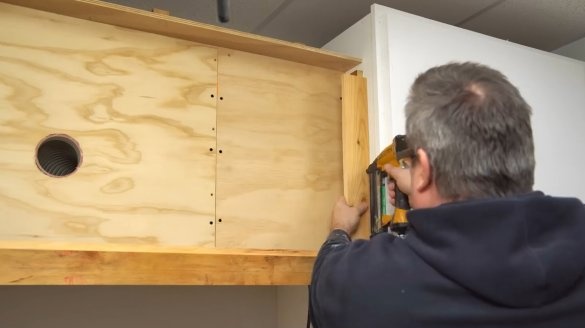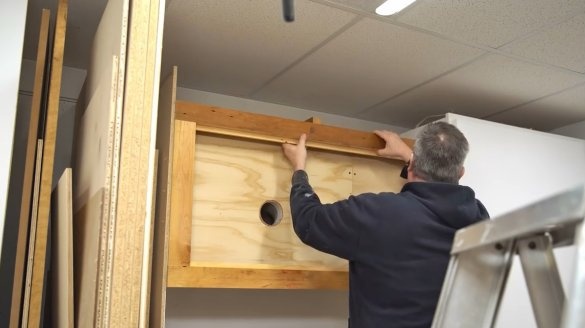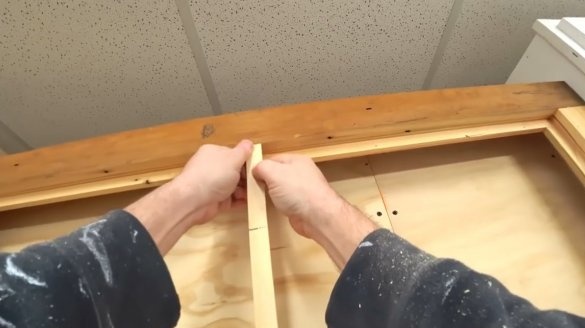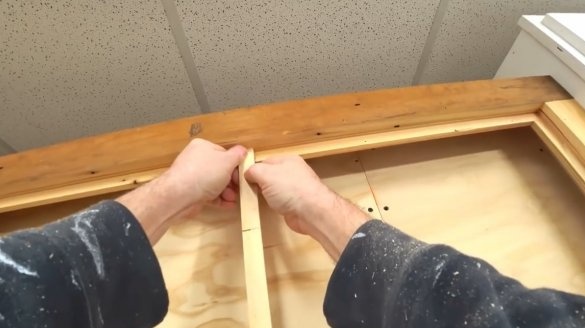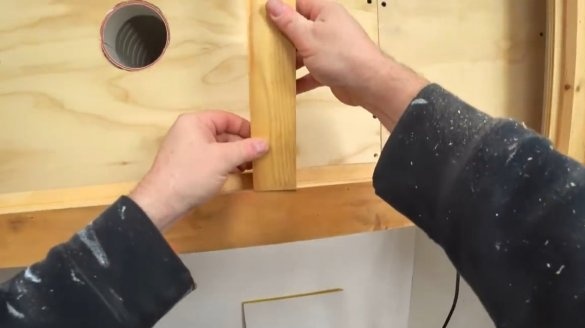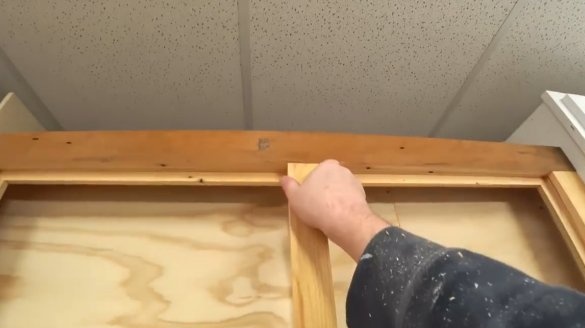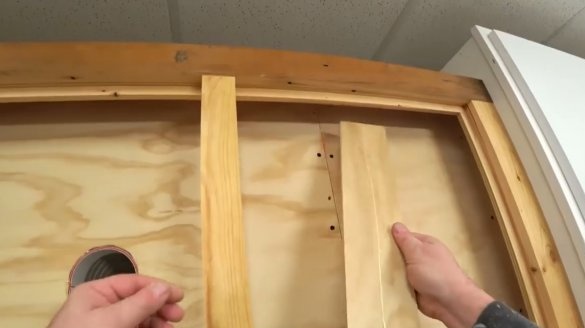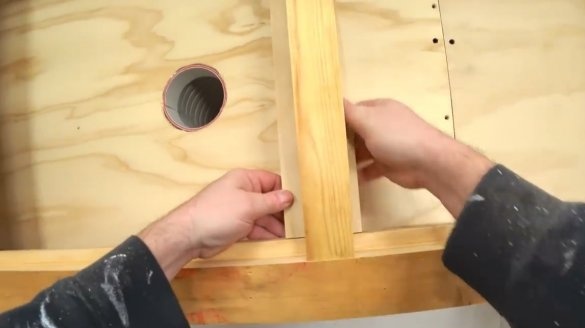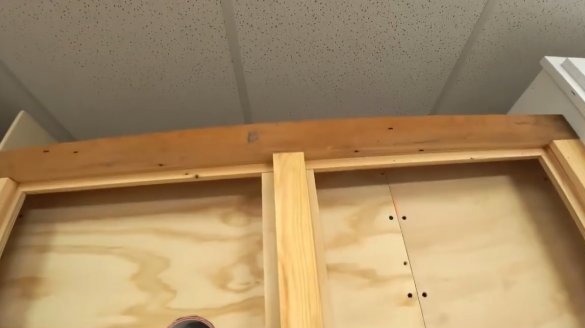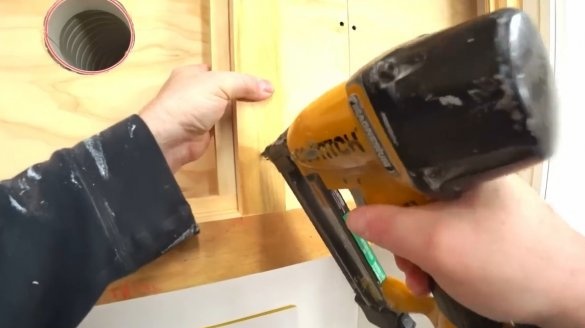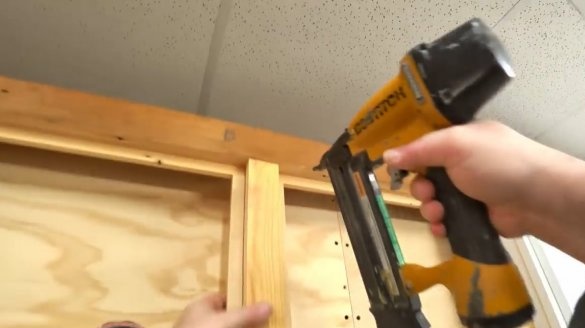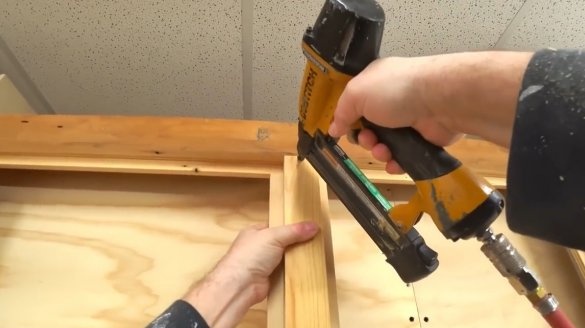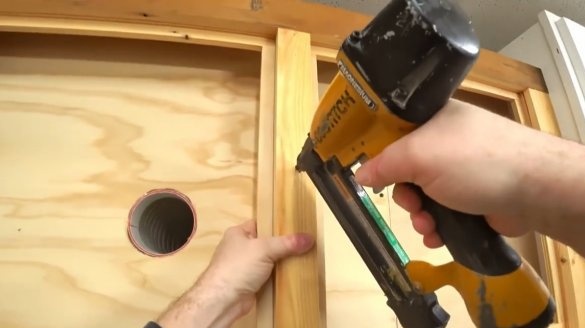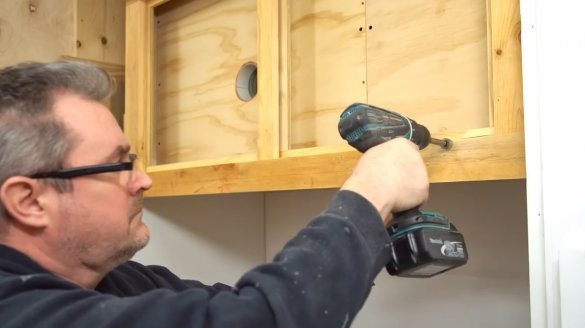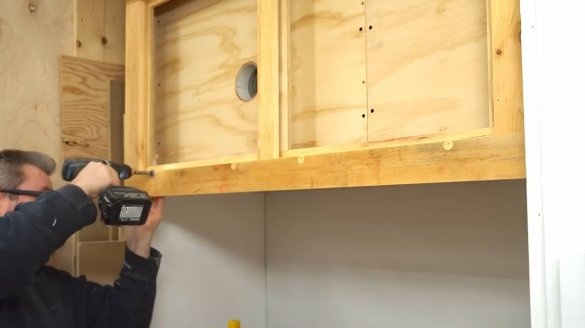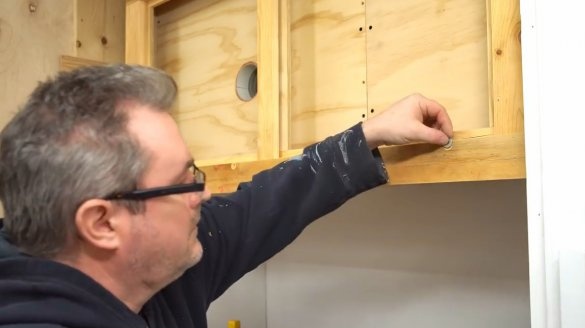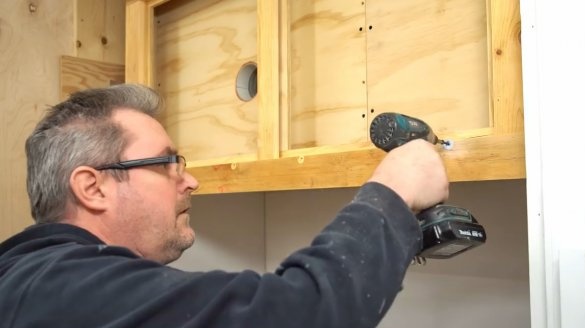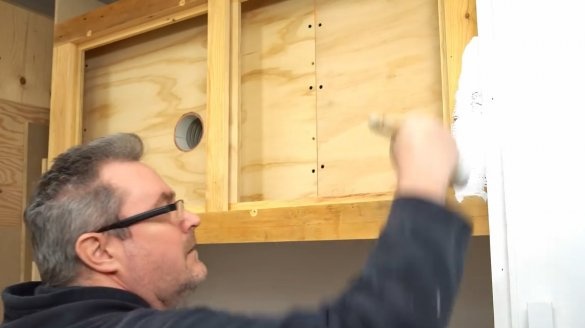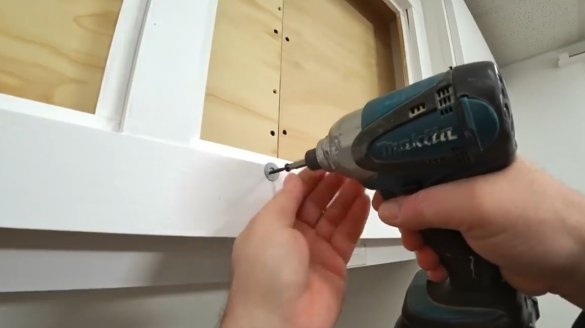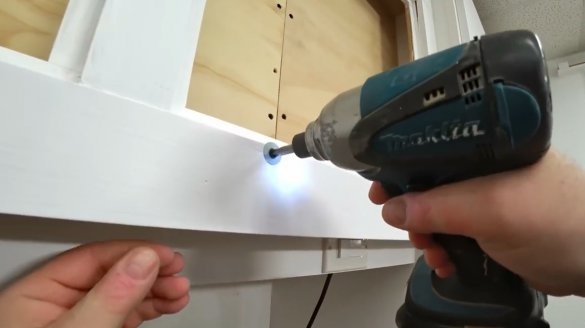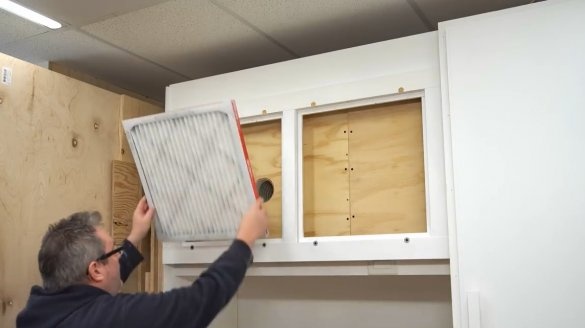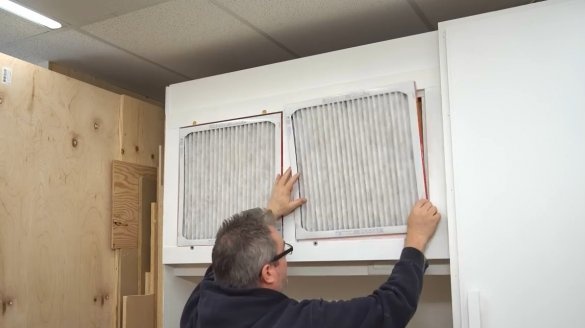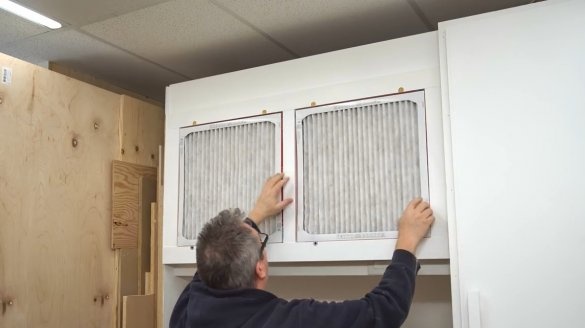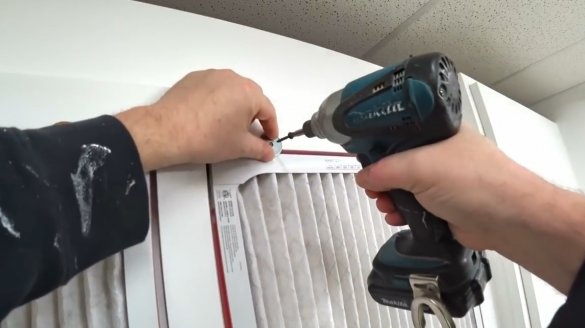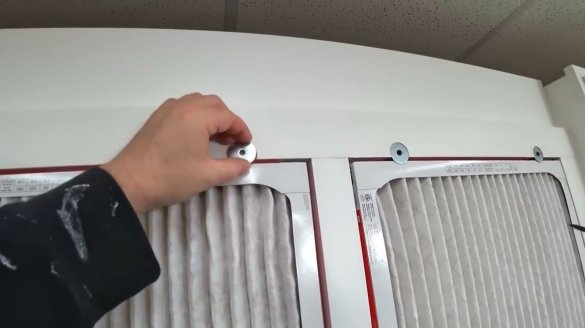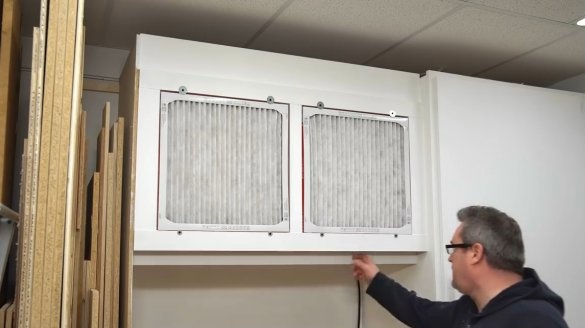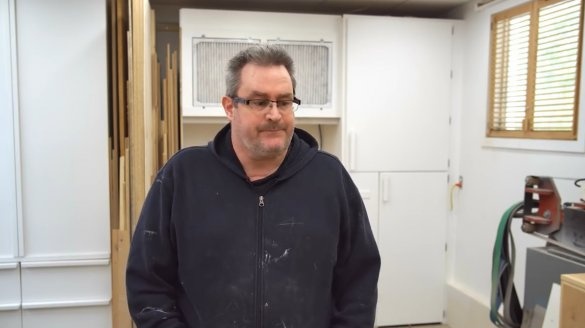Materials
- sheet plywood
- Centrifugal pump
- Wood screws, washers
- Springs
- PVA glue
- Corrugated pipe
- PVC pipe
- White paint
- Air filters 250X250 mm.
Instruments, used by the author.
- Screwdriver, wrench
- A circular saw
- Miter saw
- clamps
- Forstner drill
- Pneumatic nail gun
- An electric fret saw, a cloth on a tree.
Manufacturing process.
A few years ago, John built a fan unit from plywood and MDF, and he borrowed the motor from an old centrifugal pump. The case you see is whipped up for testing. The author is going to give him a second life, introducing a couple of changes into his design. The master also has the task of making the cleaner as quiet as possible, since there are plenty of noise in the workshop.
Partially disassembles the body of an old hood.
As a result of the experimentation, John came to the conclusion that the device works most quietly when the blowing is fully open. He uploaded the video to his channel, in which he demonstrates the difference in noise produced by this device and a regular hair dryer. Marks and cuts a blow hole.
The author is going to completely fence off the purifier motor, enclosing it in a blind housing and leaving only an air intake hole. The author’s idea is that the air entering the chamber is not only cleaned, but at the same time, the ovine motor ensures its cooling.
Strengthens the outlet, glues and tightens the stiffener.
Continues to redo blowing.
From the side of the injection also glues and fastens the second stiffener.
It makes a transition sleeve from PVC pipe, cuts off a piece of the required length, clogs it into the hole, and lubricates the seam with sealant.
John uses regular plywood to create a closed chamber. Another reason why the craftsman decides to completely isolate the device inside the case is the vibration produced by the motor and fan.
However, the vibrations set in motion the casing itself, in which the filters are located. Therefore, John is going to use springs. It also does not hurt to lay some sound-absorbing material on the outside of the box.
After a short sound test, the master fixes the mounting brackets on the wall and hangs a duct box with a fan on them, after having screwed two springs on top and one on the bottom to the stiffeners.
Then hangs the box with the motor on the upper springs.
Now a wooden block is attached to the wall, this will be the lower profile of the large case.
The author is also going to completely close the bottom of the air purifier. He uses plywood again.
These wooden hooks, which are now screwed by the master to the bottom of the panel, will cling to the lower spring screwed to the bottom of the fan unit. This design should prevent rocking of the device. Puts the spring on the hooks.
Now collects the bottom, fastens it to the profile.
The next step, John attaches the inlet hose, and then drills a hole under the power cord, and pulls it out. Moreover, the wire should have a small margin inside.
The latter is constructed from the remaining plywood material. And the author cuts an inlet in it.
Installs another adapter sleeve in the front of the case, seals the joint.
It connects a hose, collects the side and front walls of a large body.
After another quick test of traction, and she holds a piece of plywood, John proceeds to building the frame holding the filters on the front of the housing. The assembly of the frame is conveniently done using a neiler.
The filters used in this project are a finished product purchased at a household appliance store. In this case, the size of the filters is 250X250 cm. Filters of this type are usually used in forced air furnaces.
The author did not want to be very puzzled by the search for an elegant way to attach filters. He simply took advantage of the washers, screwing them so that they protruded slightly beyond the edge of the panel. He drilled shallow grooves with washers using a Forstner drill.
In conclusion, John covers his product with two layers of white paint. So the design looks much neater and more fun.
After the paint dries, it fastens the lower washers, installs the filters, and fixes them in place with the upper washers.
It is worth noting that the upper part of the ventilation unit remained completely open, so
air passing through the filters can calmly exit it.
And John stands at a distance of about 3 meters from the air purifier. The device sounds very quiet! You can live with it.
Thanks to John for the interesting idea of a workshop air filter.
Good luck to everyone, good mood and homemade!

